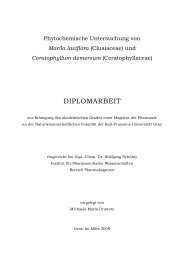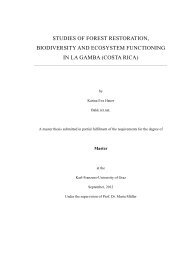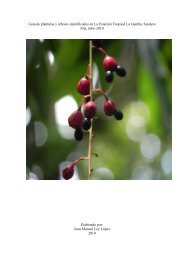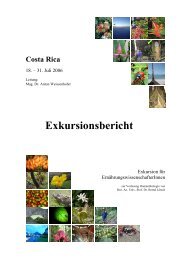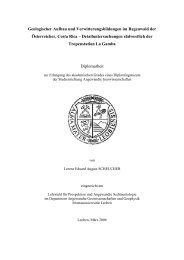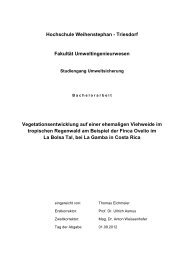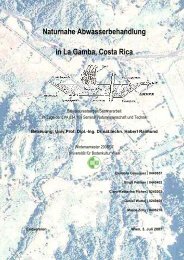Leaf colour patterns, vegetative and sexual reproduction of Episcia ...
Leaf colour patterns, vegetative and sexual reproduction of Episcia ...
Leaf colour patterns, vegetative and sexual reproduction of Episcia ...
You also want an ePaper? Increase the reach of your titles
YUMPU automatically turns print PDFs into web optimized ePapers that Google loves.
Figure 15 <strong>Episcia</strong> lilacina; Alticinae beetles browse<br />
one flower.<br />
Discussion: The evolutionary competition between forage plant <strong>and</strong> butterfly is not only<br />
fought with chemical weapons, but also with optical deception <strong>and</strong> camouflage (Gilbert 1982).<br />
Females <strong>of</strong> the heliconiine butterfly are geared by the leaf form <strong>of</strong> their specific forage plant for<br />
the placement <strong>of</strong> their eggs. Thus, with time, a plenty <strong>of</strong> leaf forms developed that appeared to be<br />
grazed or full with eggs (Lunau 2002).<br />
There could be similarities between the strategy <strong>of</strong> the family <strong>of</strong> Passifloraceae <strong>and</strong> <strong>Episcia</strong><br />
lilacina. The different <strong>colour</strong>ation <strong>of</strong> the leaves could be a simulation <strong>of</strong> grazed leaves (Fig. 14).<br />
The attacking insects are misled by the contrasty <strong>colour</strong>ation. But the results show that the<br />
hypothesis <strong>of</strong> leaf mimicry cannot be proved. The found species <strong>of</strong> beetles seems to limit its<br />
foraging to the flowers. Thus leaves only one species <strong>of</strong> butterflies to feed on the plant. There are<br />
rarely traces <strong>of</strong> feeding damage on both leaves <strong>and</strong> flowers. Most notably, no difference between<br />
the various leaf-types could be observed. No locations totally grazed by vermin could ever be<br />
found. Most likely, there are some kinds <strong>of</strong> chemical repellents present in the leaves. They are<br />
heavily pilose, probably, to avoid being eaten (Schaller 2002). In addition, there are few amongst<br />
the types <strong>of</strong> leaves that look actually grazed.<br />
As a conclusion it can be said that the cause for the diverse leaf <strong>patterns</strong> is not to appear<br />
grazed to attackers. Relating to this, a tendency towards a certain pattern would be recognizable.<br />
34



